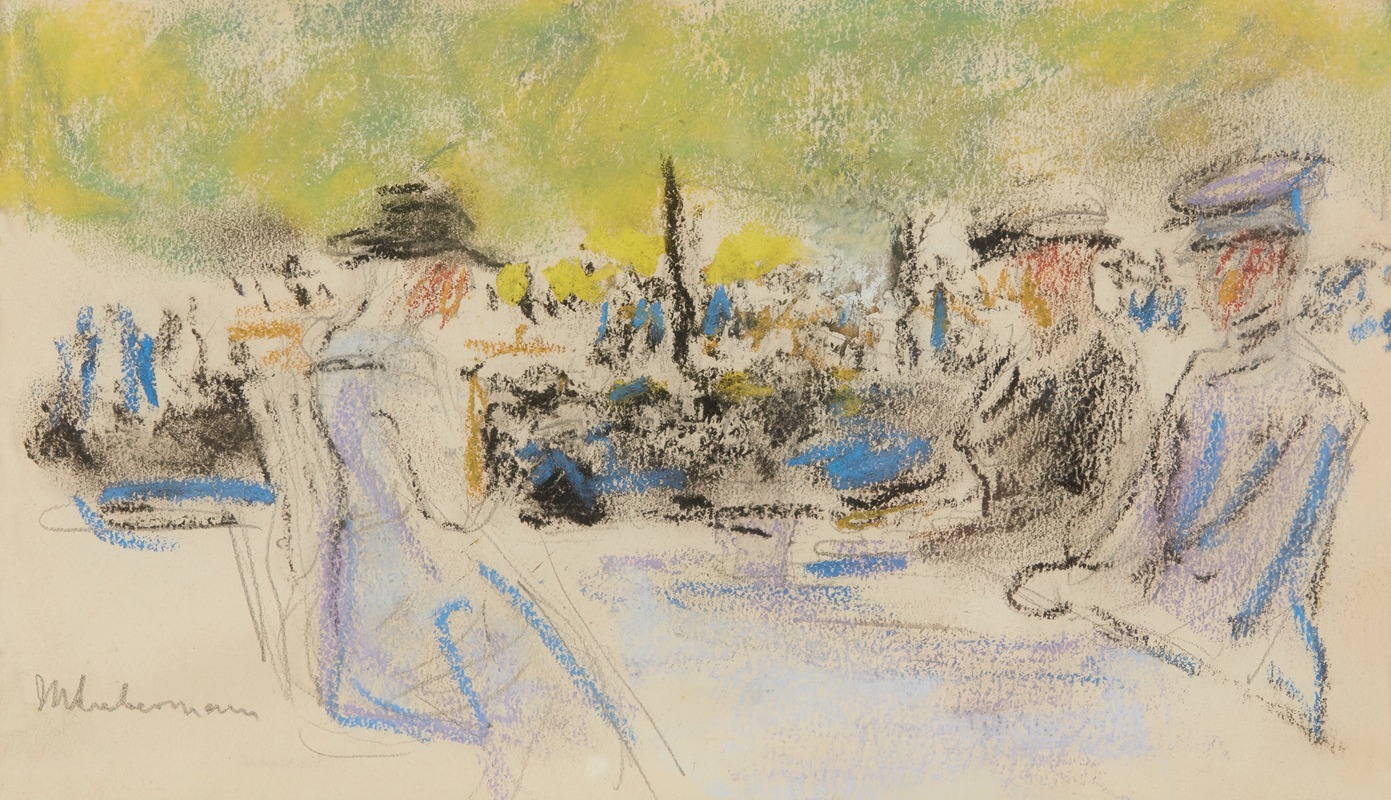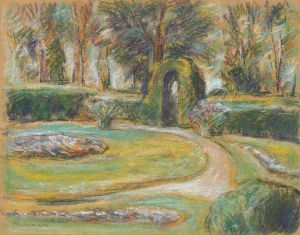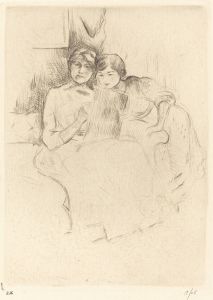
Am Tisch
A hand-painted replica of Max Liebermann’s masterpiece Am Tisch, meticulously crafted by professional artists to capture the true essence of the original. Each piece is created with museum-quality canvas and rare mineral pigments, carefully painted by experienced artists with delicate brushstrokes and rich, layered colors to perfectly recreate the texture of the original artwork. Unlike machine-printed reproductions, this hand-painted version brings the painting to life, infused with the artist’s emotions and skill in every stroke. Whether for personal collection or home decoration, it instantly elevates the artistic atmosphere of any space.
Max Liebermann's painting Am Tisch (translated as At the Table) is a work by the renowned German painter and printmaker Max Liebermann (1847–1935), who is widely regarded as one of the leading figures of German Impressionism. Liebermann is known for his depictions of everyday life, often portraying scenes of leisure, work, and domestic settings with a focus on natural light and realistic detail.
Am Tisch is an example of Liebermann's interest in capturing intimate and ordinary moments. The painting depicts a group of individuals seated around a table, engaged in quiet activity or conversation. The composition reflects Liebermann's characteristic style, which combines loose, impressionistic brushstrokes with a keen observation of human interaction and atmosphere. The scene is rendered with a sense of warmth and immediacy, emphasizing the simplicity and beauty of daily life.
The exact date of the painting is not definitively documented, but it is consistent with Liebermann's mature period, during which he frequently painted domestic interiors and garden scenes. Liebermann's works from this time often feature family members, friends, or anonymous figures in relaxed, informal settings. The painting's subdued color palette and naturalistic lighting are hallmarks of his approach, which was influenced by both the Dutch Old Masters and the French Impressionists.
Max Liebermann was a prominent figure in the Berlin Secession, an art movement that sought to promote modern art in Germany at the turn of the 20th century. His works, including Am Tisch, reflect his commitment to portraying modern life with honesty and sensitivity. Liebermann's art often celebrated the quiet dignity of everyday existence, and his paintings remain significant for their ability to capture the essence of their time.
The current location of Am Tisch is not widely documented in public records, and it is unclear whether the painting is held in a museum, private collection, or another institution. Liebermann's works are featured in major collections worldwide, including the Alte Nationalgalerie in Berlin and the Städel Museum in Frankfurt, but specific details about Am Tisch are limited.
As with many of Liebermann's paintings, Am Tisch reflects the artist's ability to find beauty in the ordinary and to convey a sense of humanity through his art. The painting stands as a testament to Liebermann's skill in capturing the subtleties of light, texture, and human interaction.


















